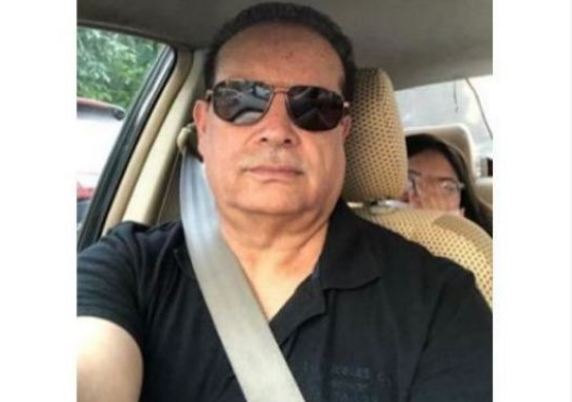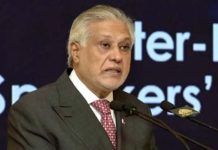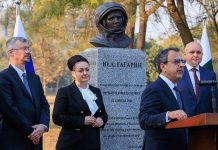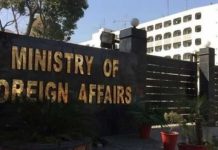Qamar Bashir
The political chessboard in Pakistan is currently in a state of flux, with many high-impact twists and turns taking place in the country’s political game, which has never had a boring moment in its history. The PTI, which appeared to be invincible a few months ago on the back of unprecedented public support, particularly among the young and educated lot of both men and women, particularly in the urban class all over the country, is now completely shattered, battered, and appears to have lost everything it had gained perhaps over the last 30 years, and it now has to wait for some miracle to happen to save its chairman from obvious arrest and impending disqualification to contest elections. We all remember that the establishment, which has returned as the biggest political broker with a vengeance after the 9th May mayhem, declared him as a number one enemy soon after the ousting of his government in April 2022, and when it does so, it means the end of any political figure or party as long as it remains on its bad books, until any future turn or twist brings him and. or his party back into action, as has been the case in the cases of both PML(N) and PPP. However, given the age of the PTI chairman, who may have another five years of active political life ahead of him and no legacy to follow, if he misses the bus, which appears to be writing on the wall at this point in time, there may not be much meat left in him to resurrect himself or his party in the future. He should be grateful, though, to the PPP, which never endorsed the concept of banning the PTI and disqualifying politicians; otherwise, it may have happened much sooner.
The planning of making a new party out of PTI and breaking up PTI must have begun much earlier than the unfortunate incident of 9th May when 200 army installations around the country were attacked in a premeditated planning most likely conceived and put into action by the retired Army General sympathizers of PTI who have been thoroughly interrogated and along with civilian supporters of PTI who choose violence to achieve their political objectives forgetting rule of law. However, the May 9 incident was an excellent reason to drive the PTI stalwarts away from the PTI and into the arms of the newly founded Istehkam-e-Pakistan Party, which was proclaimed on June 9 with an unprecedented electric speed by the same shepherd who had brought them into the PTI.
Today (17th July), perhaps the last neil was struck toward total annihilation of PTI when its most ardent supporters and members of PK and national assembly led by his close associates Pervez Khattak and Mehmood Khan announced formation of yet another splinter of PTI, PTI-Patriot, following the same pattern in which PPP and PML were broken down time and again since their formation. PPP was divided into PPP (Shaheed Bhutto) in 1979, PPP (Sherpao) in 1988, PPP (Patriots) in 1997, and PPP (Parliamentarians) in 2016, whereas Pakistan Muslim League (PML) was divided into PML (Q) in 2002, PML (N) in 1999, PML (F) in the 1980s, and PML (J) in 1970.
This also means that the makers and breakers of Pakistani politics are still capable of reapplying the same old and time tested strategy with the same effectiveness and fine finish achieving all of their objectives, proving that politicians have never learned from history and have fallen prey to the same hunter time and time again with the same snare and trap and same results.
Considering the current political chessboard arrangement, the PTI appears to have few power pieces, just the timid, horrified, and depressed pawns, who, if played smartly and in the face of opponents’ erroneous movements, may even vanquish the king. The far-fetched theory, though highly implausible, purported is that all the splinter groups were formed with the tacit support of the PTI chairman to hoodwink the establishment and buy time to cool down its wrath, and these groups, at the time of election, may agree on seat adjustment formula, particularly in KP and Punjab, with full support of the Chairman PTI, and together, they may be able to save some face. Instead of rejoining PTI and contesting elections on the platform of IPP, PTI breakaway stalwarts with the tacit support of PTI chairman may contest elections as independent candidates and after winning the election may lend their support to PTI. Both strategies are unlikely to succeed, and the establishment’s hawkish approach may frustrate them even if they are launched.
In comparison to the PTI, the PML(N) possesses numerous power pieces but few pawns on its side of the chess board. In the absence of an opposition leader and an opposition party in the parliament, it will simply design a caretaker government in the center of its choice. It has an election commission on its side, the economy has shown some signs of life for the time being after signing the IMF agreement, their leadership has been exonerated of all corruption charges, and they have prepared the ground for the return of Nawaz Sharif to Pakistan, which is their most powerful piece..
However, given his track record of repeated and critical confrontations with the Establishment, his return may be marred with uncertainty, as the establishment, which is back in the driving seat with vengeance in all sectors of national discourse, may not be willing to take the risk of putting Nawaz Sharif back in the saddle and entering into most imminent confrontation mode soon after he is installed as Prime Minister. As a result, while the PML(N) has demonstrated its complete commitment to re-electing Nawaz Sharif as Prime Minister, it may lose the Queen as well as many other power pieces, which will be distributed to either the PPP or the IPP.
PPP has a large number of power pieces and quite a few pawns on its side. It is backing the caretaker governments in KP and Punjab, and will ensure that it has its own proportional stooges in the caretaker government in the center, as does the PML(N). It has a hereditary fiefdom in Sindh and is likely to retain power there regardless of the election results in Punjab, KP, or elsewhere. During its reign from 2008 to 2013, it has shown an ability to work well with the establishment. Even now, the establishment has sought Asif Ali Zardari to persuade other politicians to support the no-confidence motion against Imran Khan. He was a member of the opposition alliance that brought the motion forward, and he was also key in convincing some of Khan’s own allies to desert and vote against him. On March 8, 2022, he orchestrated the opposition’s no-confidence resolution against Khan, which was carried by the National Assembly on April 10, 2022, and Khan was dismissed from office.
The big question is why the establishment has helped Jehangir Tareen, who is suffering from serious health issues, and Pervez Khattak, a fervent supporter of Imran Khan, to prop up two separate parties, one primarily driving its members from Punjab and especially from southern Punjab, and the other driving its candidates from PK province. There could be two major hypotheses. The first possibility is that even the PML(N) and PPP were used to depose Imran Khan, but the Establishment does not trust either of these parties, in the case of the PPP due to its widespread perception as corrupt from the top, and in the case of the PML(N) due to the impending confrontation, especially while Nawaz Sharif is in the saddle, and Maryam Nawaz’s belligerent posture.
What IPP will accomplish in this case is intriguing. One scenario is that the IPP, which currently controls the majority of PTI electables and has the support of the Establishment, would win significant seats in Punjab and the Centre, while the PTI-P will do the same in KP province and the Centre. They may be able to build governments in the center, Punjab, and KP with the help of celebrated independents, allowing the Establishment complete flexibility to pursue its development agenda and drive the country forward.
The second, more realistic theory is that they would not establish a government in the center or provinces, but will garner enough seats in the center, Punjab, and KP to effectively cripple any government formed by the PPP, PML(N), or PTI. In such a scenario, politicians will lose much of their capital in developing consensus on national agendas and will seek the establishment’s assistance at every critical moment in the same manner and style that the PTI has done during its time in power, allowing the establishment to pursue whatever agenda it has to steer the country forward without any opposition or confrontation.
With decades of experience dealing with establishment, PPP and PML(N) have probably realized the layout of the chess board and, as a result, during the meeting of Zardari and Nawaz in Dubai, they may have jointly thoughout the plan to manage IPP and PPP-P in such a way that they both do not pose a critical threat to upcoming governments. Analysts dismiss IPP as an insignificant force with no charismatic leader to attract voters and no plans and strategy to steer the country differently than it has been steered in the past, but they may be wrong in doing so, as prior to the 2018 election, PTI was as insignificant as the IPP or PTI-P, but with the support of the establishment, it became a formidable force and ruled the country until April 2022, but now that this support has been withdrawn, it has collapsed. This critical support appears to be with IPP and PTI-P rather than PPP or PML(N), and history shows that this has worked in the past and will continue to work in the future to determine the political path.

















